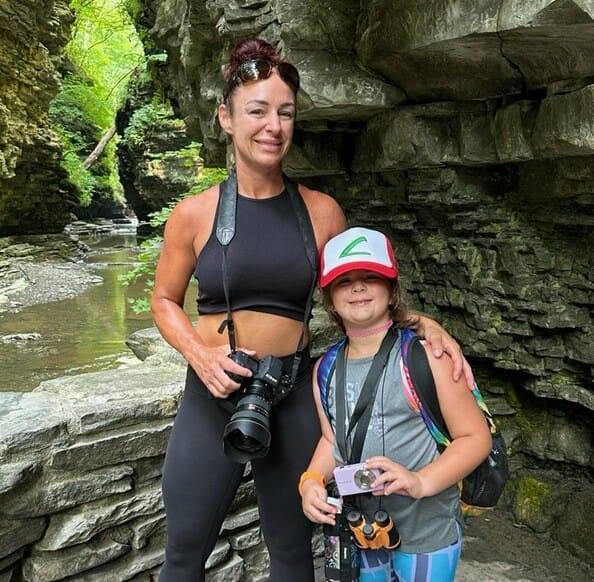Starting something new can feel intimidating, especially when it’s as dynamic and powerful as kickboxing. But the good news? Kickboxing is for everyone, no matter your age, fitness level, or experience.
At Atomic Kickboxing, we’ve helped countless beginners take their first steps into the world of fitness kickboxing. If you’re ready to lace up your gloves and step onto the mat, here’s everything you need to know to feel confident and prepared.
What to Expect from Your First Kickboxing Class
Walking into your first kickboxing class might feel overwhelming, but there’s no need to worry—you’re in good hands every step of the way.
Classes are typically structured to include a warm-up, skill instruction, fat-burning combinations, and a cool-down. The warm-up raises your heart rate and prepares your body for the workout ahead. During the skill instruction portion, your instructor will break down the fundamentals of punches and kicks to ensure you’re using proper form.
You’ll then practice these moves in combinations, putting together sequences that not only challenge your body but also stimulate your mind. These dynamic combinations are great for fat-burning, keeping your metabolism high and your body engaged throughout the class.
The session concludes with a cool-down, helping to stretch your muscles and bring your heart rate back to normal.
By the end of the class, expect to sweat, smile, and feel a sense of accomplishment from the progress you’ve made, while knowing you’ve burned calories and worked towards your fitness goals.
Do You Need Prior Experience?
One of the best things about kickboxing is how beginner-friendly it is. You don’t need any prior martial arts or fitness experience to get started. In fact, many people who join fitness classes like kickboxing are completely new to the sport.
Instructors provide step-by-step guidance to help you learn at your own pace. The focus isn’t on perfection—it’s on progress. Over time, you’ll develop the skills and confidence to execute each move with precision, building both strength and technique along the way.
What Gear Do Beginners Need?
Before your first class, you’ll need a few essentials to stay comfortable and safe. Here’s what you should bring:
- Comfortable Athletic Wear: Wear clothes that allow you to move freely, such as leggings, shorts, or a t-shirt. Avoid anything too loose, as it may get in the way during your workout.
- Hand Wraps: These provide wrist support and protect your knuckles. They’re a must-have for anyone hitting the bags.
- Boxing Gloves: A pair of well-fitted boxing gloves will cushion your hands during punches and keep your joints protected. If you don’t have your own, many gyms provide loaner gloves for beginners.
- Water Bottle: Stay hydrated! Kickboxing is a high-intensity workout, and you’ll need to replenish fluids throughout the session.
- Towel: A small towel can come in handy for wiping off sweat during breaks.
Instructors provide guidance on gear selection and may even offer rental equipment for your first few sessions.
Basic Techniques for Beginners
As a beginner, your focus should be on mastering the fundamentals. Here are some of the core techniques you’ll learn in your first few fitness classes:
- Jab: A quick, straight punch thrown with your lead hand.
- Cross: A powerful straight punch thrown with your rear hand.
- Hook: A curved punch targeting the side of your opponent’s head or body.
- Roundhouse Kick: A high-energy kick that uses your shin to strike the target.
Your instructor will break down each move and help you practice them at a comfortable pace. Over time, you’ll progress to more complex combinations that challenge your coordination and timing.
How to Pace Yourself
Kickboxing is a full-body workout that can be intense, especially for beginners. It’s important to listen to your body and pace yourself during class.
Don’t worry if you can’t keep up with every move or combination right away. Focus on maintaining good form and staying engaged. As your fitness improves, you’ll naturally be able to push harder and last longer.
Taking short water breaks and adjusting your intensity when needed is perfectly fine. Remember, every champion started as a beginner!
The Mental Side of Kickboxing
Kickboxing isn’t just a physical workout—it’s also a mental challenge. As you learn new techniques and combinations, you’ll need to stay focused and present. This mental engagement keeps your brain sharp and helps you leave distractions behind.
Many beginners find that kickboxing becomes a form of stress relief. Punching and kicking the heavy bag is an excellent way to let go of frustration, boost your mood, and feel empowered.
The Importance of Community
One of the most rewarding aspects of kickboxing is the sense of community you’ll experience in class. Members and instructors work together to create a welcoming, supportive environment where beginners feel motivated to succeed.
Training alongside others who share your fitness goals builds camaraderie and boosts motivation. The energy of the group encourages you to push through challenges and give your best effort, even on tough days.
How to Set Realistic Goals
When starting kickboxing, it’s important to set achievable goals. These might include:
- Attending class twice a week for the first month.
- Mastering basic punches and kicks within a few sessions.
- Improving your endurance and stamina over time.
As you hit these milestones, you’ll gain confidence and motivation to keep pushing yourself. Remember, progress is more important than perfection.
Get Started
If you’re ready to step into the world of kickboxing, Atomic Kickboxing is the perfect place to start. Our beginner-friendly classes are designed to help you learn the basics while building strength, confidence, and endurance.
Located in Providence, RI, we welcome people of all fitness levels to join our community and experience the transformative power of kickboxing. Visit Atomic Kickboxing to view our class schedule and sign up for your first session.


















